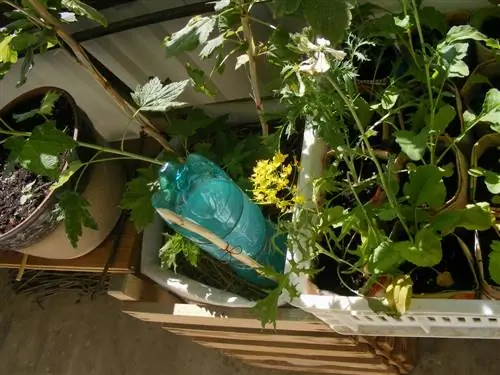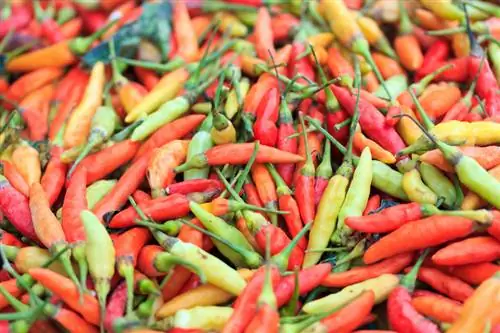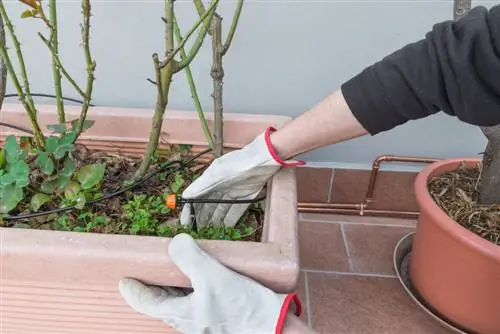- Author admin [email protected].
- Public 2023-12-16 16:46.
- Last modified 2025-01-23 11:21.
An irrigation system for the flower pot on the windowsill at home can be useful not only during a shorter or longer absence. Many pot gardeners have little time, are very busy with work or family - and therefore tend to forget to water. To ensure that this doesn't happen and you still don't have to go without fresh greenery in the apartment and on the balcony, you can use various irrigation systems.

How do I water potted plants properly?
To properly water potted plants, you can use planters with a water reservoir, watering balls, cones or PET bottles. In addition, the planting substrate can be enriched with clay beads or perlite and the plants in the pot can be mulched to retain the moisture in the substrate for longer.
Best Practices for Watering Potted Plants
If you don't want to rely on complicated irrigation systems that work with a pump and water connection, you can choose from numerous electricity-free methods. These are either available cheaply from well-stocked specialist retailers or can be built yourself with just a few materials.
Planters with water reservoir
It is important to look ahead and think about a possible vacation and the associated irrigation problems when planting. If possible, buy planters with a water reservoir, even if they are expensive. They save you a lot of time, all you have to do is refill the reservoir regularly. However, these vessels are only suitable if a few days have to be bridged. For a longer summer vacation you need additional watering.
Watering balls/cones
This can be accomplished with the help of irrigation balls (€11.00 on Amazon) or cones. Irrigation balls, for example, are made of glass and are one-piece. You fill the upper, spherical part with water and simply insert the rod into the plant pot. The water will gradually seep out of the carboy. Watering cones, on the other hand, are made of plastic or clay, and they also work a little differently: They always require an external water container from which the water flows into the cone and is released from there to the plant. The container is either screwed directly onto the cone or connected to it via a thin hose.
Irrigation with PET bottles
The irrigation cones have proven particularly useful when combined with a PET or glass bottle, onto which they are screwed and finally inserted into the substrate. In order for the system to work, the soil must be watered well beforehand - otherwise the bottle will empty very quickly.
More tips for watering potted plants
You can also protect your potted plants from drying out prematurely by
- mix the plant substrate with clay balls/perlite
- Clay stores more water than simple soil and therefore keeps the substrate moist
- Mulch the plants in the pot, for example with sheep's wool (also available in pellet form)
Tip
If you like to grow your plants on the windowsill yourself in spring or grow offshoots, you can provide them with enough water in this way: Cut a PET bottle cleanly in half and close the top part tightly with it perforated screw cap. Fill this with the planting substrate and place the young plant in it. The lower part of the bottle is filled about two thirds with water. Now put the upper part in the lower part and go on vacation with confidence.






